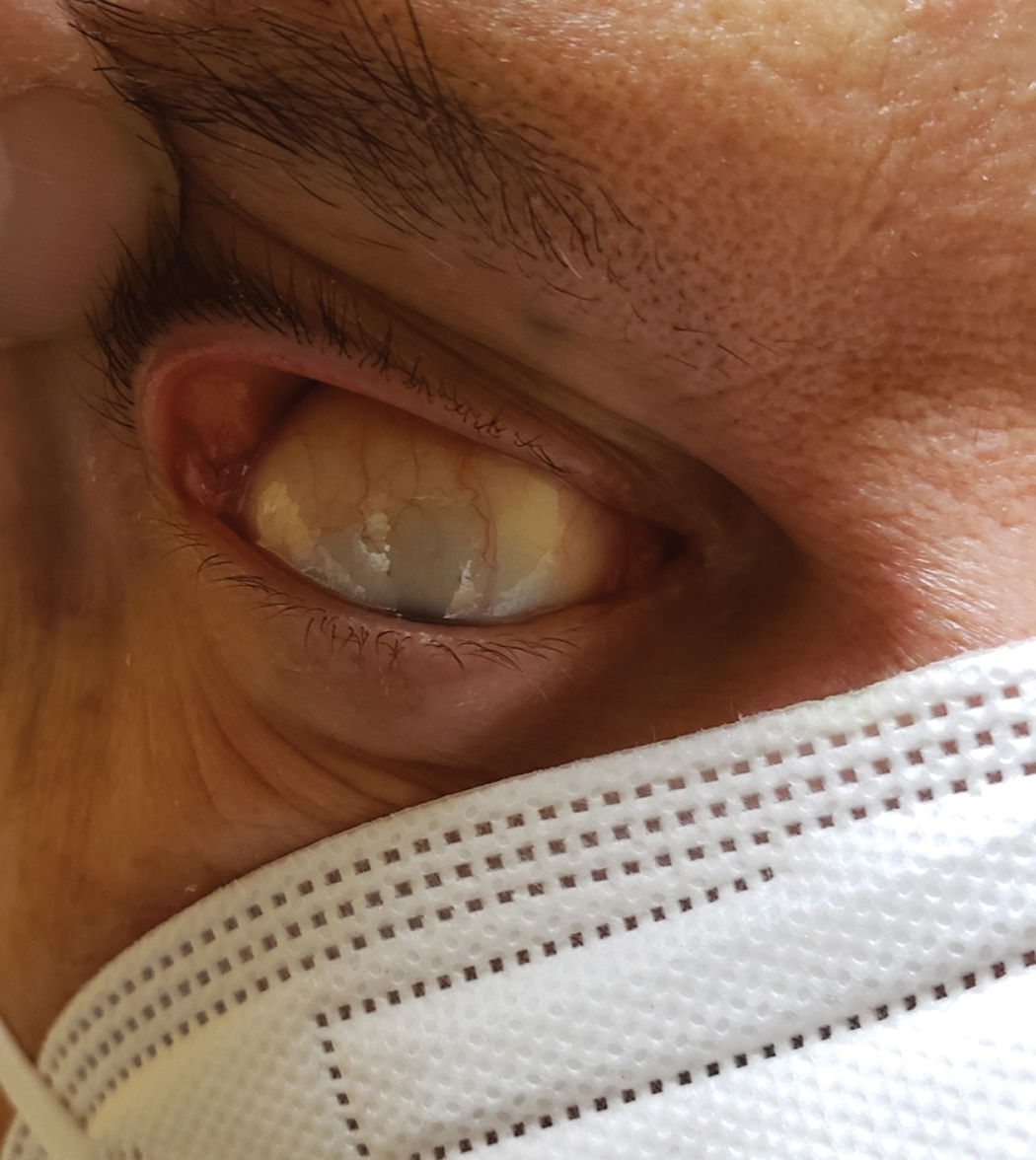 |
Q:
I have a 66-year-old patient who has symptomatic dry eyes that have not responded to cyclosporine, lid scrubs or other measures. What should I do?
A:
When patients experience chronically dry and irritated eyes that don’t improve with conventional therapy, there is often more going on than meets the eye. “Some of the most common etiologies for chronic ocular dryness, redness and irritation are complications derived from obstructive sleep apnea,” says Brad Sutton, OD, professor at Indiana University’s School of Optometry.

|
| Fig. 1. Floppy eyelids should trigger questions about sleep apnea. Click image to enlarge. |
Sleeping Troubles
Sleep apnea is a major public health issue highly associated with an increased risk of cardiovascular diseases such as hypertension, stroke and myocardial infarction. It’s also linked to many ocular conditions. Non-arteritic ischemic optic neuropathy (NAION), glaucoma, central serous chorioretinopathy and retinal vein occlusions occur more frequently in these patients.
“NAION is so common in sleep apnea sufferers that sleep apnea should be ruled out in any patient diagnosed with NAION,” Dr. Sutton says.
There are two main factors to consider when sleep apnea patients complain of chronic dryness and irritation. They can experience ocular surface complications either related to the use of continuous positive airway pressure (CPAP) devices or to floppy eyelid syndrome, or both.
If the CPAP mask does not form a tight seal, the forced air can leak out and flow toward or directly into the eyes. If lagophthalmos is present, the situation is exacerbated by more exposure and punctate keratitis, dryness and conjunctivitis.
Patients with floppy eyelid syndrome often experience the same ocular surface issues but for a different reason—their eyelids become loose and rubbery. These eyelids evert easily with minimal contact on the pillow while sleeping, leading to both exposure concerns and issues with direct mechanical abrasion. If a patient always sleeps on one side, only that eye is affected. Only 5% of patients with sleep apnea develop floppy eyelid syndrome, but nearly all patients with floppy eyelid syndrome have sleep apnea. The lids of our patient led to more questioning, and he admitted to using CPAP therapy (Figure 1).
To help these patients who have tried many treatments without relief, Dr. Sutton recommends detecting the underlying issue. Many patients do not list sleep apnea on their medical intake form unless prompted by a specific question. Relying on patients to include it on a review of systems is often ineffective. “It is far better for the doctor to outright ask if a patient has sleep apnea and if they use a CPAP device,” Dr. Sutton notes.
In CPAP-induced ocular irritation and floppy eyelid syndrome, patients experience irritation, dryness and redness upon awakening. As the day goes on, the symptoms usually improve.
Treatment
In the case of CPAP-induced ocular surface exposure, ensure that the patient’s sleep specialist maximizes the proper mask fit. Have the patient instill tear ointments, such as Refresh PM (Allergan), or gel-based artificial tears before bed to protect the ocular surface. Use gel-forming artificial tears upon awakening, and then use artificial tears throughout the day as needed. In severe cases, taping the eyelids closed at night can help. “Patients may not comply with surgical tape, so suggest placing nasal strips vertically from the upper lid to the cheek,” Dr. Sutton recommends.
Similar measures can help those with floppy eyelid syndrome. Dr. Sutton believes that switching the patient to a cylindrical pillow can be effective. This allows the patient’s cheek, not the eyelids, to rest on the pillow and reduces mechanical eversion. Having the patient sleep on their back can help, but many people might not be able to do this.
“In some instances, wearing a firm sleep mask can also help prevent lid eversion,” Dr. Sutton says. “In very severe cases, surgery can be considered to tighten the eyelids.”
Dr. Ajamian is the center director of Omni Eye Services of Atlanta. He currently serves as general chairman of the education committee for SECO International. He has no financial interests to disclose.

